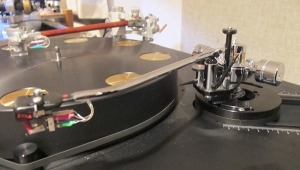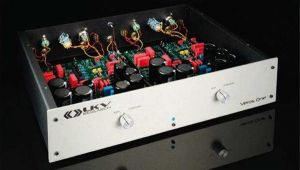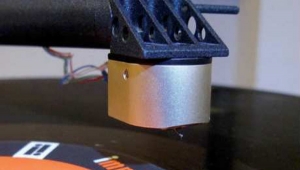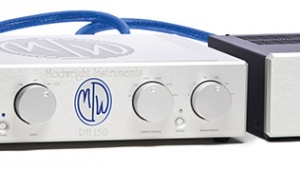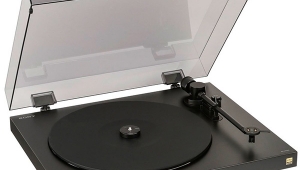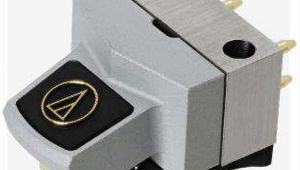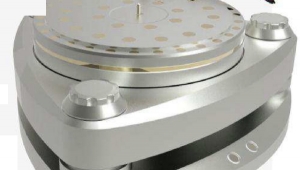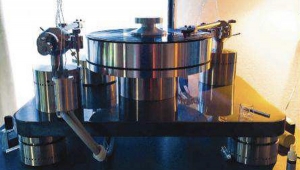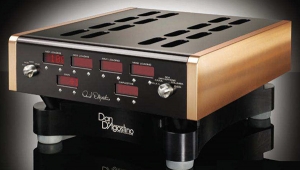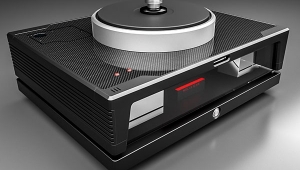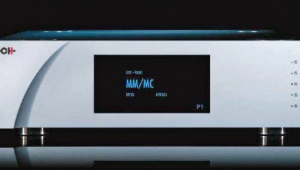| Columns Retired Columns & Blogs |
Analog Corner #267: Reed Muse 3C turntable & Reed 3P tonearm Page 2
The picture of this sonic spectacular painted by the Muse 3C, 3P, and Epoch was exceptionally wide, deep, rock solid, three-dimensional, tonally well saturated, and free of artifacts. Transients were ideal, string sheen was just right, and all instrumental textures and harmonics were ideal—a word I don't use lightly. Until you hear lower playback distortion, you don't realize how high it's been. I attributed that to the cartridge, but surely the carrier and platform played their parts.
I then played side 1 again, with Ortofon's Quintet Black S cartridge with sapphire cantilever ($999) mounted on the Wand ($1300). That combo confirmed the 3C's being dead quiet and rock steady, and sounding notably smooth while entirely avoiding "soft." I've mounted the Quintet Black S on a few 'tables, and it had never sounded this pleasingly smooth yet open and detailed—and the Wand is a game changer. Of course, that combo couldn't compare to the Reed-Grado team. As good as the Quintet Black S and Wand sounded, they were harmonically bleached and spatially flat in comparison.
When I played Dragon Quest III on my far more costly big rig—Continuum Audio Labs Caliburn turntable and Castellon stand, plus SAT arm—in which the tonearm alone costs twice as much as the 3C, it became clear that the 3P-3C combo was not the last word in detail retrieval, dynamic slam, and, especially, bass authority—but I hardly expected it to be. However, the Epoch's midrange performance, its delivery of harmonic structures and textures, was singular.
Overall though, the 3P-3C produced so magical a balance of all vinyl playback parameters that I found myself spinning records night after night, and forgetting about the playback system.
With Belt Drive
Swapping out the Muse 3C's friction rollers for a pair of crowned aluminum pulleys, locking down the motors, and flipping the switch from Friction to Belt took all of five minutes.
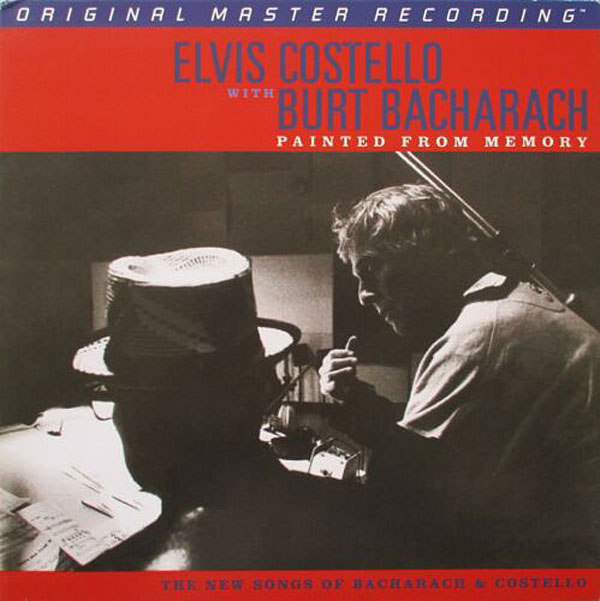
Two records I'd played many times while evaluating the Epoch cartridge were Elvis Costello and Burt Bacharach's Painted from Memory (LP, Mercury/Mobile Fidelity Sound Lab MFSL 1-475) and John Lewis's The Wonderful World of Jazz (LP, Atlantic/Pure Pleasure SD 1375). The Costello-Bacharach, recorded on tape in 1998, was previously available only as a lousy-sounding CD.

Lousy? That CD sounds dark, thick, congealed, spatially flat. The AAA LP is a revelation of instrumental colors and textures, of three-dimensional space. Jim Keltner's drums have a snap they don't on the soggy CD, and Bacharach's piano is clarified and presented in a defined space. Costello's voice is front and center, well defined in space—all absent with the CD.
Although the measured performances of friction and belt drive (see figs.3 and 4) are close to identical, I could hear a slight difference that mostly had to do with textures and spatial relationships, but also with the bass—via belt drive, it wasn't quite as taut.
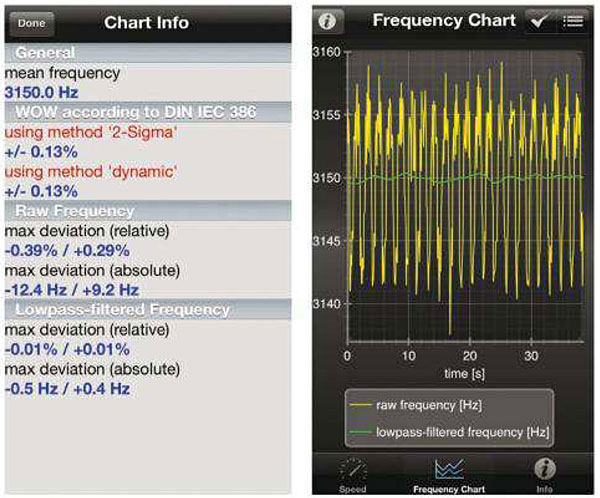
Fig.3 Reed Muse 3C, speed stability data, belt drive, Fig.4 Reed Muse 3C, speed stability, belt drive (raw frequency yellow; low-pass filtered frequency green).
I preferred belt drive's delivery of textures—Keltner's rim shots, string "grit"—and the greater delineation of instruments in three-dimensional space. But the softer, less-well-defined bass soon had me returning to the friction rollers. It was nice to have the choice.
Though I'm a big fan of John Lewis and his band, the Modern Jazz Quartet, The Wonderful World of Jazz was new to me. Pure Pleasure's reissues been spotty in recent years. I've found that most of them sound pretty good—until you hear an original pressing. This is one of their better ones. Good luck finding an original stereo pressing in good condition. This 1960 recording is an early stereo release with a hard-left/hard-right "soundstage," Connie Kay's drums at center. It might sound better in mono, which is easier to find.
The Muse 3C's belt drive excelled at expressing textures, such as those of Paul Gonsalves's dreamy tenor sax in "Body and Soul"—but the tauter friction drive produced greater rhythmic drive, and clarified George Duvivier's double bass and Lewis's piano, which is mixed as if it's in the next room. Great record, though. With the rhythm section of Lewis, Duvivier, and Kay, plus guitarist Jim Hall throughout, and guests Eric Dolphy, Gonsalves, Benny Golson, and underrated trumpeter Herb Pomeroy, it's easy to recommend—and sounded sweet and pleasing with either type of drive.
Big Thumbs Up
Though the overall performance of Reed's Muse 3C is down a few notches in a variety of playback parameters compared to the best, far more expensive turntables I've covered, it's one of the most engaging-sounding, best-balanced turntables I've reviewed. It's an ingenious, versatile, incredibly attractive design, well executed to produce quiet, musically involving, well-balanced sound built on a strong foundation of low coloration, great speed accuracy, and excellent speed consistency.
Musical and not at all analytical, the Muse 3C nonetheless revealed enough detail to produce the musical excitement we all crave from vinyl playback and—to degrees that vary with the price point—usually get. Stereophile contributor Steve Guttenberg, who likes to stir things up, once asked on Facebook why all the best turntables sound "digital." Not sure I agree that they do, but this one sure doesn't.
I preferred the Muse 3C without its supplied leather mat, and instead used either the Funk Firm's Achromat or the paper-thin Stein Pi, made of a specially lacquered Japanese tapa cloth—both of these mats produced greater clarity and transient precision. I also used the Still Points Ultra LP Isolator record weight. That and the Stein Pi produced my favorite results; yours may differ.
Meanwhile, it's fortunate that Stereophile's columns are exempt from the magazine's requirement that any component reviewed have a minimum of five US dealers. At present, a few American dealers sell Reed tonearms, but none sell the Muse 3C. That's a damn shame.
- Log in or register to post comments

